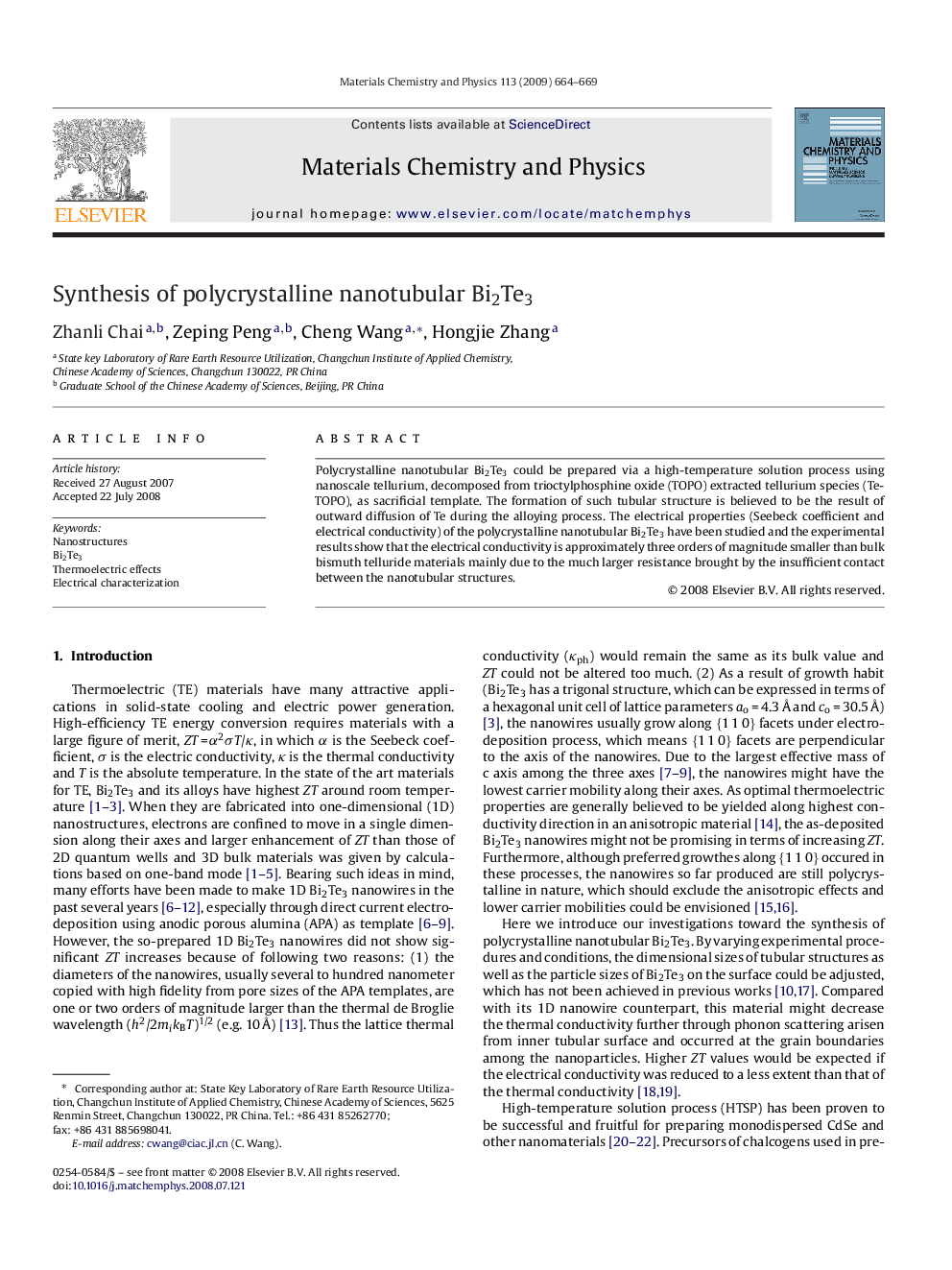| Article ID | Journal | Published Year | Pages | File Type |
|---|---|---|---|---|
| 1526244 | Materials Chemistry and Physics | 2009 | 6 Pages |
Polycrystalline nanotubular Bi2Te3 could be prepared via a high-temperature solution process using nanoscale tellurium, decomposed from trioctylphosphine oxide (TOPO) extracted tellurium species (Te-TOPO), as sacrificial template. The formation of such tubular structure is believed to be the result of outward diffusion of Te during the alloying process. The electrical properties (Seebeck coefficient and electrical conductivity) of the polycrystalline nanotubular Bi2Te3 have been studied and the experimental results show that the electrical conductivity is approximately three orders of magnitude smaller than bulk bismuth telluride materials mainly due to the much larger resistance brought by the insufficient contact between the nanotubular structures.
